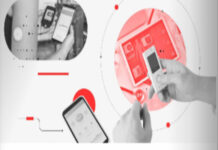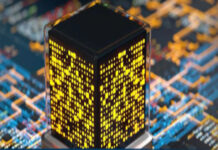Though the COVID-19 pandemic has mobilized people and apart movements from major cities, United Nations reports that there are a total of 1.3 million people moving into cities every week, with the urban populations growing to 6.3 billion, or 68% by the year 2050. Nevertheless, the rapid rise in urban populations has put a tremendous strain on global infrastructure and the environment. Researchers and innovators have come together to describe what solutions there could be for the inevitable limited resources caused by economic growth in urban areas.
In the cities of the future, Wi-Fi and 5G will be ubiquitous. This will enable smart infrastructure and IoT devices to work together seamlessly.
The smart cars of the future will be able to “talk” with each other via Vehicle-to-Vehicle (V2V) communication technology. Cars will also communicate with the infrastructure thanks to Vehicle-to-Infrastructure (V2I) connectivity. V2V and V2I will reduce the chances of auto accidents while making the driving experience more pleasant and more efficient for everyone.
We can also expect many other city functions — such as garbage collection, waste management, water provision, and safety monitoring — to be automated in whole or in part. This will make urban living safer and easier. How much easier would living in a city be if residents didn’t have to worry about the complexities of garbage collection? Or if they knew that the city was constantly being monitored for signs of violent crimes, fires, and other dangerous events?
The overall transportation system will be much improved in smart cities. Public transportation options will be more convenient and efficient.
So, what exactly is a smart city? A smart city is an urban center that hosts a wide range of digital technology across its ecosystem. However, smart cities go far beyond just this definition. Smart cities use technology to better population’s living experiences, operating as one big data-driven ecosystem.
Smart Energy
The idea of having a zero emission city is not too far away from becoming reality. The future smart city will include a host of clean energy sources to power its city. Energy in smart cities is efficient, using less energy because of the constant real-time data collection and analysis. These “smart grids” will constantly communicate with itself, sending energy to areas in the city that may need even more power, while conserving energy in places of the city that might not need it. Solar and wind energy could be collected throughout the day and sent to the appropriate area.

Improving the Tourist Experience
City residents aren’t the only ones who stand to benefit from smart cities. The tourist experience will also be much improved once cities get smarter. Traveling to a new city is an exciting and uniquely enriching opportunity. Yet there’s no doubt that it can also be stressful. Navigating a new city is tricky. Tourists don’t know all the tricks about where to find the best parking and which shortcuts to take to popular destinations. They are frequently forced to contend with huge crowds of fellow tourists while they’re out in the city. Smart cities won’t magically solve all these problems, but they will make the tourist experience a more pleasant one. Many cities with a lot of tourism are already experimenting with innovations to help tourists better enjoy their stay. There are apps that make it easier to find public transportation, directions to popular destinations, and good food.

The Vision of Smart Cities
The phrase Smart Cities is not new. It may have its origins in the Smart Growth movement of the late 1990s, which advocated new policies for urban planning. Portland (Oregon, USA) is widely recognized as an example of Smart Growth. The phrase has been adopted since 2005 by a number of technology companies for the application of complex information systems to integrate the operation of urban infrastructure and services such as buildings, transportation, electrical and water distribution, and public safety. It has since evolved to mean almost any form of technology-based innovation in the planning, development, and operation of cities.
Today’s cities face significant challenges such as increasing population, lack of physical and social infrastructure, environmental and regulatory requirements, declining tax bases and budgets, and increased costs. They have to learn to identify new and smart ways to manage the complexity of urban living, and problems ranging from pollution, overcrowding and urban sprawl to inadequate housing, high unemployment, resource management, environmental protection, and rising crime rates. Long standing urban challenges include housing, especially for low-income populations, infrastructure provision, and the delivery of a variety of services including water, sanitation, education and health.
Growth achieved by cities is linked to their ability to address issues related to urbanization and associated social, environmental and economic issues in a holistic manner, while making the most of future opportunities. The smart city concept can be looked upon as a framework for implementing this vision of advanced and modern urbanization. The vision of “Smart Cities” is the urban center of the future, made safe, secure environmentally green, and efficient because all structures -whether for power, water, transportation, etc. are designed, constructed, and maintained making use of advanced, integrated materials, sensors, electronics, and networks which are interfaced with computerized systems comprised of databases, tracking, and decision-making algorithms.
Smaller Cities During COVID-19
These and other creative solutions to unanticipated challenges – among them disinfectant-spraying drones and a robot dog that reminds people in Singapore to observe social distancing – are creating new investment opportunities in a sector that was already poised for significant growth before the pandemic.
According to a 2018 forecast from Grand View Research, the global market size of smart cities was set to rise to $2.57tn by 2025, up from $737bn in 2018.
Although the disruption of Covid-19 may temporarily curtail development plans, the long term trajectory is positive.
In February – prior to the global lockdown – the International Data Corporation’s Worldwide Semiannual Smart Cities Spending Guide projected global expenditures of $124bn in 2020, up 18.9% on 2019. Fears that smart cities could lead to unchecked surveillance by government and corporate actors can often slow or prevent the application of certain population monitoring technologies. It is conceivable that public concerns about data collection could be less pronounced following the current health crisis, providing more regulatory space for public and private actors to experiment with profitable smart city models that might have otherwise been considered too invasive.
Furthermore, experts in the field see parallels with the 2008 global financial crisis, which helped to propel the first global wave of smart city projects. The economic crash and resultant government budget shortfalls created an impetus for cities to collaborate with technology firms to address urban problems and generate new sources of revenue. A Covid-19 recession could result in similar dynamics, with more public-private partnerships or entirely private sector-driven initiatives entering the space.

















